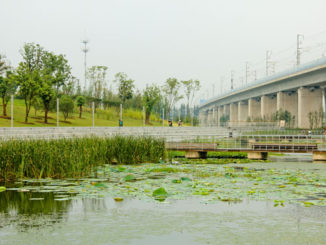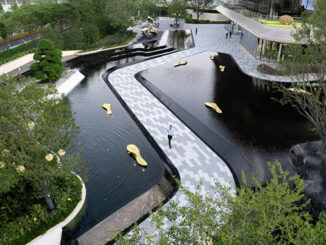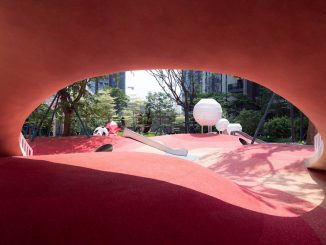After being in lockdown for the past 2 to 3 months there are many landscape architecture firms in China that are now returning back to their offices (often in stages). Although many firms in other countries are still under lockdown and restrictions and may still not return to work for months it is beneficial to gain knowledge from firms in China. How did these firms work remotely during the lockdown? and what is their advice for those who are planning to return to work in the future?
Preparing for Work from Home
When the restrictions and changes started to occur it was just as companies were breaking up for Chinese New Year and many staff had gone home to their hometowns across China to celebrate with their families.
The Government extended the Chinese New Year holiday giving companies time to work out the logistics of people working from home. There were restrictions on travel within and between cities so many staff would be working from home in their hometowns.
Decision Making and Logistics for Work from Home
Many companies set up a leadership group to make decisions and give employees direction and a sense that everything was under control. At the start, daily management messages were sent via email or intranet (homegrown or teams) then it became weekly when people got into a rhythm.
Employees were requested to complete a register of workspace, internet connection speed and any home computer capability. For staff who had no or low home capability they were requested to go into the offices one by one (or one per large office area) and sign out PC’s and laptops to start working from home, others couriered the equipment out to staff.
Team Leadership
Once employees had setup, it was a time to get team leaders to manage teams at either a team or project level setting up groups (in Microsoft Teams or Wechat – similar to Whatsapp) to manage teams and provide mentorship. Regular communication between the various members was key to ensure that not only work was been completed, but there was a team comradery that everyone is in this together.
Project Management
The team leaders broke projects up into smaller packages (either area, skill or task-based) as some people didn’t have stable internet connections. Junior staff who needed supervision were provided with smaller isolated tasks to allow them to work autonomously.
During the lockdown period, we found our studio so spread far and wide, across China, Europe, Taiwan, Australia, Philippines and Vietnam. This provided us with the opportunity to streamline are work process. We needed to adapt tasks for each person, with individual input be more explicit, focused on components of the design, be it sections, master plan, models or details each assigned to different team members, then coordinated and curated with a single person.
Stephen Buckle – Studio Director, ASPECT Studios – Shanghai
Document controllers were appointed to distribute and collate the files and load it back to a central server. Other firms already had cloud-based systems in place and allowed for each employee to access and upload files as needed.
Staff were also reminded to keep files as small as possible to reduce the load on networks and lag for people downloading on slow connections.
Within one to two weeks teams were working smoothly and checking in on each other on a regular basis. Regular office and group meetings were key to keep projects on track and rejoin the team together to build comradery.
Communication
Emails and messages were sent to clients to inform them of how the landscape firm was continuing to service projects but also to offer help in assisting the client if they had client staff in the consultant based cities.
For running meetings, it was key to have multiple video conference services available to meet with clients but also have backup services due to service load as some services where also starting to get overloaded with schools using the same services. Most firms used Zoom, Tencent meeting, Welink, Webex, MS Teams, or Zhumu to communicate with clients.
For internal communication, Wechat is embedded into many firms with group chat and one to one chat. Staff were informed to use email sparingly and to use chat or group meetings as a quick efficient method of communication.
Although emails are still used for formal communication, WeChat has become the method of choice for general communication and coordination. Easy to use and unsurpassed for efficient instant text, voice, video and file sharing – even in groups of 2-200 people. It has easily become the most fluid way to maintain contact in and out of the workplace.
Jack Qian – Director – GVL Gossamer – Shanghai
The collaboration was also through Zoom, Teams, Zhumu and PDF markup tools to allow people to work together on one or multiple files. Due to the lack of access to large format printing tools such as Procreate, Bluebeam and other PDF apps became key for senior staff to provide ideas and feedback.
The key component to ensure creativity and effectiveness (deadlines are immune to Covid-19) was communication. Fast, smooth and direct, both in terms of chatting and workshopping ideas, drawing sketches and designs and technical coordination. Using digital platforms such as Zoom for the design sessions and Procreate and Trace for developing ideas, sketches and designs allowed the freedom and creativity the studio environment to translate to dispersed operation.
Stephen Buckle – Studio Director, ASPECT Studios – Shanghai
Team Morale
Keeping up team morale is important throughout the work from home period as people become distant and isolated working in the bedroom or lounge room especially when the days start to blur as weekends are filled with staying at home and not seeing friends or family. It is important to hold non-work chats and meetings where people share what is happening on a personal perspective and get to talk with teammates about non-work issues.
Returning to Work
Once governments (national, provincial and city) made announcements that people would be allowed to return to the city and work firms started making plans for staff to return to offices.
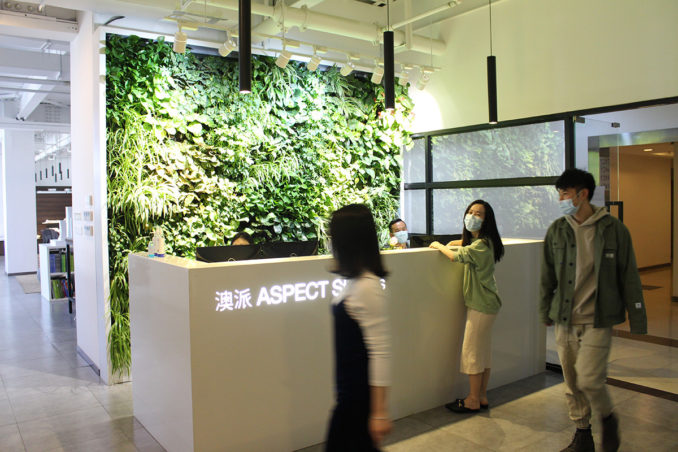
Many firms delayed the returning to offices to allow for deep cleaning and also to manage the possibility of spread of the virus by having staged returns to allow for wide spacing of staff.
Some overseas employees are experiencing delays as countries have differing restrictions and policies.
All buildings have government-mandated temperature checks and each individual has an app with a QR code (green, yellow or red) that restricts your movement in cities. Many cities required anyone entering the city to have a 14-day quarantine and not able to leave their residence on return, so this had to be also managed to ensure people did not return to work early. Most companies have their full team back in their offices and working together.
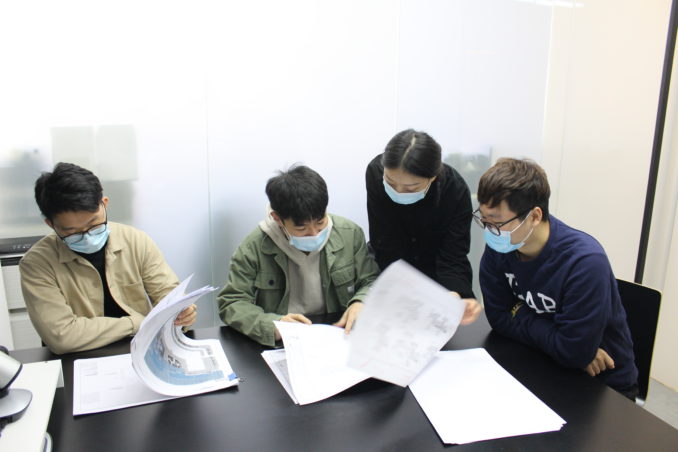
Health and safety has been our top priority while we have done everything in our power to quickly adapt and ensure that we can keep our teams together and delivering good work.
Lee Parks – Director, Landscape – AECOM China
Face to face meetings with clients have started to return however, they often go through a management risk review and approval process to ensure the safety of employees and clients.
Lessons Learned
- Working from home can benefit senior staff as they gain time for clear thinking without interruptions and also can experience have a better life/work balance.
- Keep up team morale and check-in with people on a regular basis as they may living by themselves and have little human interaction.
- Plan to have regular team meetings to discuss non-work and non-COVID-19 related news to allow people to share ideas together and maintain the team bond.
- Staff can work more autonomously and flexibly no matter the location
- Prepare for cleaning and staged return to work.
- Determine who may be delayed returning to the office due to travel or quarantine restrictions.
- Keep clients informed about returning to the office but also your policy on the face to face meetings and travel.
- People will feel isolated during the lockdown but when it is all over the teams will have a common bond that everyone worked together to get through this period as a team.
- When you return to office bring the teams together and make sure everyone feels welcome back into the office.
- Project Meetings with clients & collaborators to the office can still be via Video Conference after returning to your office whether across town or across the country which can save on time and pollution. You need to question whether a face to face meetings are necessary.
- The work from home period encourages innovation as the speed at which people have adapted increases problem-solving skills and will allow easier remote collaboration between your teams and with your collaborators.
- Keep ideas and lessons learned list so you can go back it to remember what the team learned during the lockdown and use it as a training tool.
Article written by Damian Holmes with contributions from:
Jack Qian, Director at Gossamer in Shanghai, China
Lee Parks, Director of Landscape at AECOM China
Stephen Buckle, Studio Director at ASPECT Studios
DISCLAIMER: This article is for educational purposes only. The content is intended only to provide a summary and general overview on matters of interest. It’s not intended to be comprehensive, nor to constitute advice. You should always obtain professional or legal advice, appropriate to your own circumstances, before acting or relying on any of the above content.

